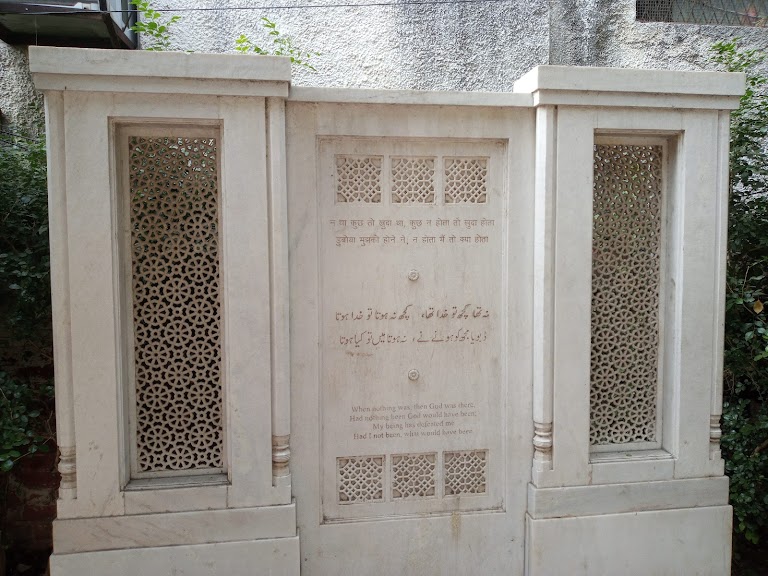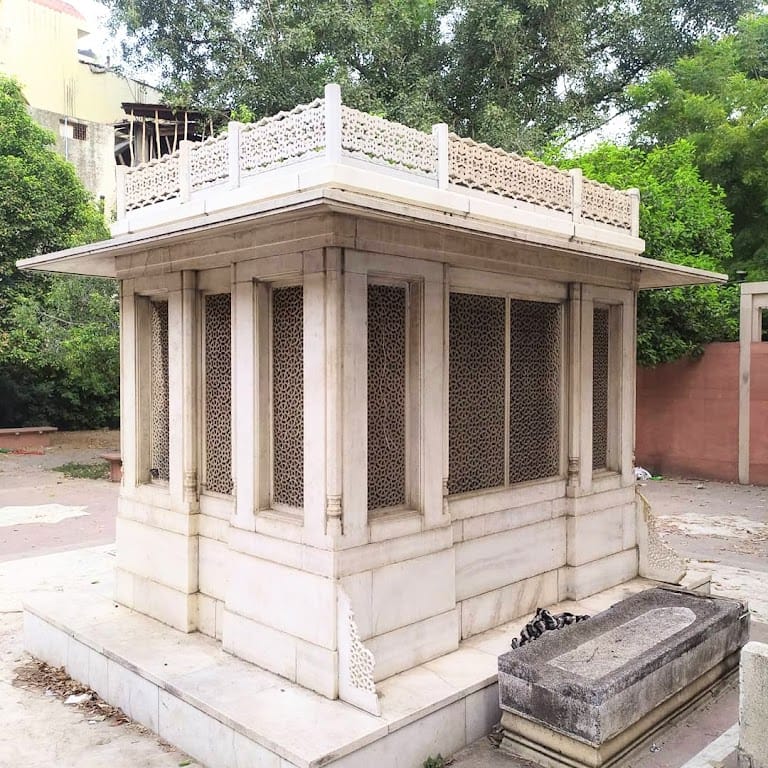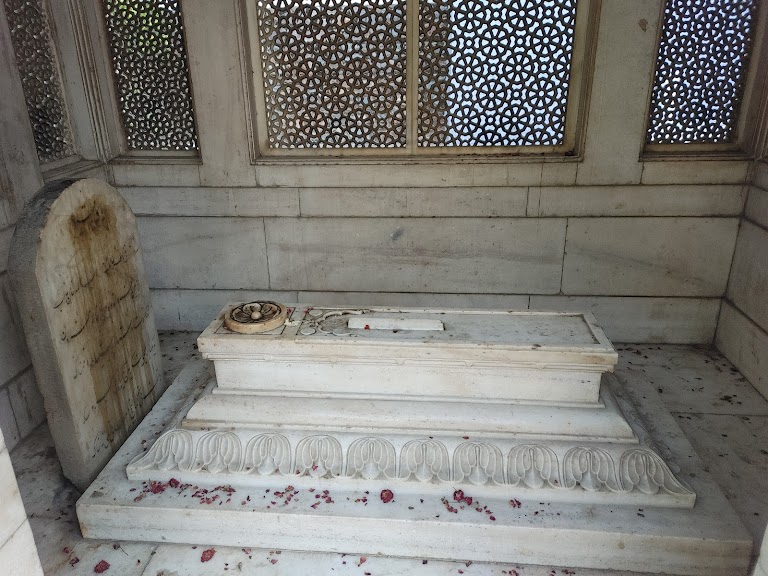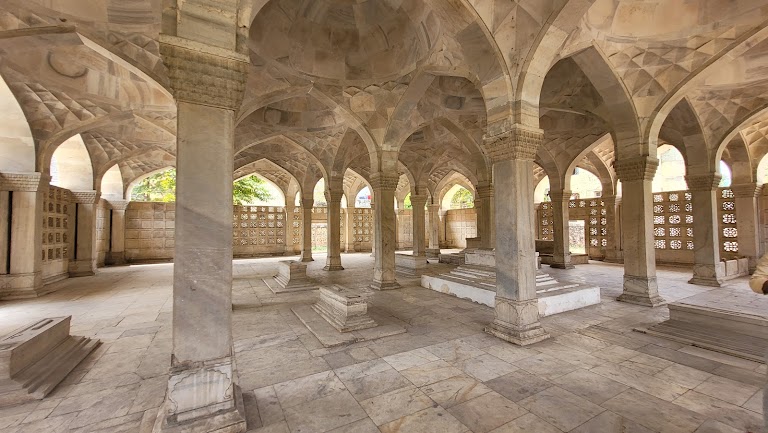



The Mazar-e-Mirza Asad Ullah Khan Ghalib, located in Delhi, India, is the final resting place of one of Urdu and Persian literature's most celebrated poets, Mirza Ghalib. The tomb stands as a symbol of Ghalib's enduring legacy and attracts poetry enthusiasts and tourists from around the world. Constructed in 1869, the tomb is a reflection of Mughal architecture, featuring intricate designs and beautiful inscriptions that echo Ghalib's poetic genius. Ghalib's poetry has had a profound influence on Urdu literature, and this mausoleum serves as a tribute to his contribution. Mirza Ghalib (1797-1869), born Mirza Asadullah Baig Khan, is widely regarded as one of the greatest poets of the Urdu and Persian languages. He was born on December 27, 1797, in Agra, during the Mughal era. Ghalib is known for his ghazals, which explore themes of love, loss, metaphysical questions, and existentialism. His work is marked by its complexity, wit, and deep philosophical insights, making him one of the most revered figures in Urdu literature. Early Life and Background: Ghalib's family was of Turkish descent. His grandfather came to India during the reign of Ahmed Shah. He lost his father at a young age and was raised by his uncle, who also passed away when Ghalib was still young. At the age of 13, Ghalib married into an aristocratic family and moved to Delhi, where he spent most of his life. Poetry and Style: Ghalib wrote both in Urdu and Persian, but his Urdu ghazals are what he is most famous for. His poetry is unique for its unconventional themes. He didn't just write about romantic love but also about the complexities of life, the pain of existence, and the philosophical musings on the nature of reality. Ghalib's poetry was often reflective of his personal struggles. Despite being a court poet during the Mughal period, he faced financial difficulties throughout his life. Major Works: Diwan-e-Ghalib (Collection of Ghazals): His most famous work, a collection of ghazals that exhibit the depth and beauty of Urdu poetry. Ghalib's letters, written in simple, conversational Urdu, also hold a special place in Urdu literature as they give insight into the social and cultural fabric of the time. He also wrote Persian poetry, which he considered superior, although his Urdu ghazals earned him greater fame. Legacy and Influence: Ghalib lived through the decline of the Mughal Empire and the advent of British rule in India, which significantly impacted his worldview. His work was not fully appreciated during his lifetime but has grown in stature over the years. His ghazals are sung and recited in various forms even today. Ghalib's philosophical outlook, use of metaphors, and unique poetic expression have made him an enduring figure in South Asian culture. Establishment and Impact: Mirza Ghalib's house in Delhi (now known as Ghalib ki Haveli) has been turned into a museum, dedicated to his memory and works. Numerous books, films, and TV shows have explored his life and work, further cementing his legacy as a cultural and literary icon. Ghalib's influence transcends poetry and has deeply impacted Urdu language, culture, and even cinema and music in the Indian subcontinent. Visiting the Mazar-e-Mirza Asad Ullah Khan Ghalib Tomb offers a unique opportunity to delve into the world of one of the greatest poets in history while enjoying the historical charm of Delhi.